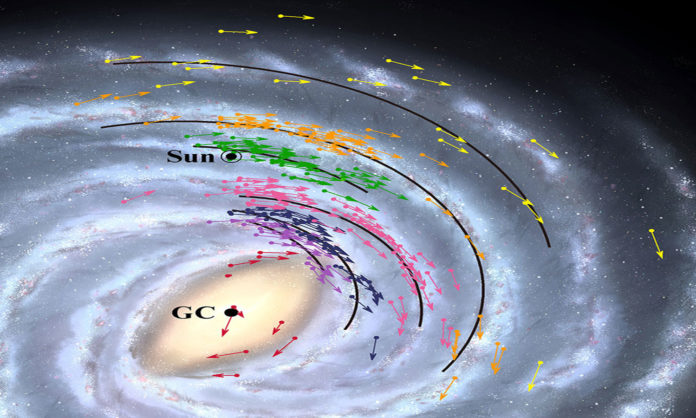VERA (VLBI Exploration of Radio Astrometry, by the way, “VLBI” represents Very Long Baseline Interferometry) started in 2000 to map three-dimensional velocity and spatial structures in the Milky Way. Using a methodology called interferometry, VERS combines data from radio telescopes scattered across the Japanese archipelago to achieve the same resolution as a 2300 km diameter telescope would have.
This year, the First VERA Astrometry Catalog was published containing data for 99 objects.
Based on the VERA Astrometry Catalog and recent observations by other groups, astronomers constructed a position and velocity map. From this map, they calculated the center of the Galaxy, the point that everything revolves around.
By pinpointing the location and velocity of around 99 specific points in our Galaxy, VERA has concluded that the supermassive black hole Sagittarius A, at the center of our Galaxy, is 25,800 light-years from Earth — almost 2,000 light-years closer than what we previously believed.
This doesn’t mean that Earth is plunging towards the black hole. Instead, it’s merely the result of a more accurate model of the Milky Way based on new data.
The model also calculated that Earth is moving faster than we believed. The older model indicated that Earth is traveling at 220 km/s as it orbits around the Galactic Center. But the new model suggests that Earth just got seven km/s faster and traveling at 227 km/s as it orbits around the Galactic Center.
Now VERA hopes to observe more objects, particularly ones close to the central supermassive black hole, to characterize the Galaxy’s structure and motion better.
